Welcome, Wonks! This weekend brought the most succinct critical feedback I’ve yet received. One forkful into dinner, my three-year-old let me know “I don’t love this.”
Subscribe to the Wonk and never miss a chart…
CAP Month: April is Child Abuse Prevention Month. The White House issued a proclamation formally recognizing the occasion and elevating Administration priorities.
Liability: On April 4, Los Angeles County proposed a $4 billion settlement for 6,800 claims of sexual abuse in foster care and juvenile detention dating back to 1959.
If approved by county leadership, it would be the biggest settlement of its kind, including the nationwide $2.4 billion one by the Boy Scouts of America.
We’ve previously covered liability insurance for foster care providers and related proposed federal reforms. This will be one to watch for that discussion…
Reconciliation Reconnaissance
It’s Monday in 2025, which means Child Welfare Wonk has your updates on budget reconciliation. Here’s the latest scouting report on what matters for child welfare.
What’s New: The Senate has approved a joint budget resolution to unlock the budget reconciliation process. The House may vote as soon as this week on the same one.
Reconciliation in Context: Our reconciliation overview and recent forecast of state-by-state effects of possible spending cuts in reconciliation remain relevant.
As part of proposed spending reductions to offset tax policy changes, this simple-majority fast-track legislative procedure could create cuts to child welfare programs:
Social Services Block Grant (SSBG);
Temporary Assistance for Needy Families (TANF); and
Medicaid.
This map highlights the projected child welfare cuts nationwide.
Senate Action: In the early morning hours of April 5, the U.S. Senate voted 51-48 to approve the compromise budget resolution to advance budget reconciliation efforts.
Republican Senators Rand Paul (R-KY) and Susan Collins (R-ME) joined all Democratic Senators in opposing the resolution.
Senator Collins indicated her vote was a result of the failure of an amendment preventing cuts to Medicaid, which Senator Josh Hawley (R-MO) co-led.1
House Forecast: Crystal ball cloudy, with a chance of a vote this week.
Source of Difference: In classic Washington style, the resolution is structured in a way that allows differing factions to all claim victory.
Reconciliation is a multi-step process, with the budget resolution delegating targets for tax and spending policy to individual committees in the House and Senate.
This resolution gives different cuts to different chambers, directing substantial reductions for the House and de minimus ones for the Senate.
How Does That Work: Congressional leadership has essentially fused the different approaches together in theory of unlock process by punting substance
Level of Agreement: Members with equally crucial votes have views ranging from protecting Medicaid to seeking much larger domestic spending cuts.
The resolution would also raise the debt limit, which also cleaves the conference.
What’s Next: The U.S. House must approved the same resolution. After that, the real drafting begins in the committees.
Wonks would expect the resolution to advance, but the real challenges will emerge with concrete drafting and negotiating an agreement that can pass both chambers.
What to Watch: Updates from the Treasury Department on CY2024 tax receipts. The decision to deal with the debt limit in reconciliation makes that a core driver of timing.
Impact of ACF Staff Cuts
The News: Starting on March 31st, the U.S. Department of Health and Human Services (HHS) began a round of 10,000 Reductions in Force (RIF).
RIFs Vs. Layoffs: National news typically refers to “layoffs” or “cuts” to jobs, which is a more familiar concept for private sector employees. But technicalities matter.
Federal law governs the RIF process.2 The Office of Personnel Management notes:
“When an agency must abolish positions, the RIF regulations determine whether an employee keeps his or her present position, or whether the employee has a right to a different position.”
RIF Rationale: First reported by POLITICO, you can read for yourself the circulating HHS memo outlining the thinking behind the RIFs.
It ties the RIFs to HHS Secretary Kennedy’s Make America Healthy Again3 focus on chronic illness and creating efficiency.
RIF Reality: While the memo focuses on redundancy, the Administration has acknowledged cuts to major programs and in some instances plans to reverse them.
For example, Secretary Kennedy indicated HHS will rehire up to 20 percent of those eliminated, explaining:
“Part of the DOGE—we talked about this from the beginning—is we’re going to do 80% cuts, but 20% of those are going to have to be reinstalled, because we’ll make mistakes.”
ACF Cuts in Context: If you’re reading Child Welfare Wonk, you need to know what this means for ACF, and in context of prior cuts as well.
This analysis is based on available data and discussions with former ACF staff.
Total ACF Staff Impact
~500. ACF staff who received April 1 RIF notice;
~200. Probationary ACF staff terminated in February;
10. ACF staff terminated in January related to roles focused on DEIA;
35-40%. ACF staffing footprint reduction, January-April.
50%. Half of 10 regional offices eliminated.
Examples of Implicated ACF Offices and Programs
SSBG. No staff remain in the Office of Community Services, which administers it.
TANF. TANF’s state policy and budget teams cut from Office of Family Assistance.
State Implementation of Federal Child Welfare Policy. RIFs at the Children’s Bureau eliminated the Division of State Systems.
ACF Oversight and Approval of State Policy and Programs. RIFs eliminated half of ACF’s 10 regional offices, and related Office of Regional Operations staff.
Civil Servant Leadership. Several Senior Executive Service leaders for child welfare and family violence were placed on immediate administrative leave.
Transparency & Communications. RIFs eliminated ACF’s FOIA team and all but two communications staff.
Cuts in Context: Regional Office RIFs
Child Welfare Wonk doesn’t break news; we find it broken and put it together for you in context. Let’s break down what this means using the regional office example.
What Regional Offices Do: The regional offices serve as a liaison between ACF and states and territories implementing ACF programs. This includes:
Supporting oversight of federal programs to ensure compliance;
Answering technical policy and program questions;
Negotiating state program and cost allocation plans
Original 10 ACF Regional Offices
Before last week, ACF divided the states, tribes, and territories who implement its programs into 10 regions, as shown here:

The RIFs eliminated the regional offices serving Regions 1 (Boston), 2 (New York City), 5 (Chicago), 9 (San Francisco), and 10 (Seattle).
States Directly Impacted by Five ACF Regional Office Closures
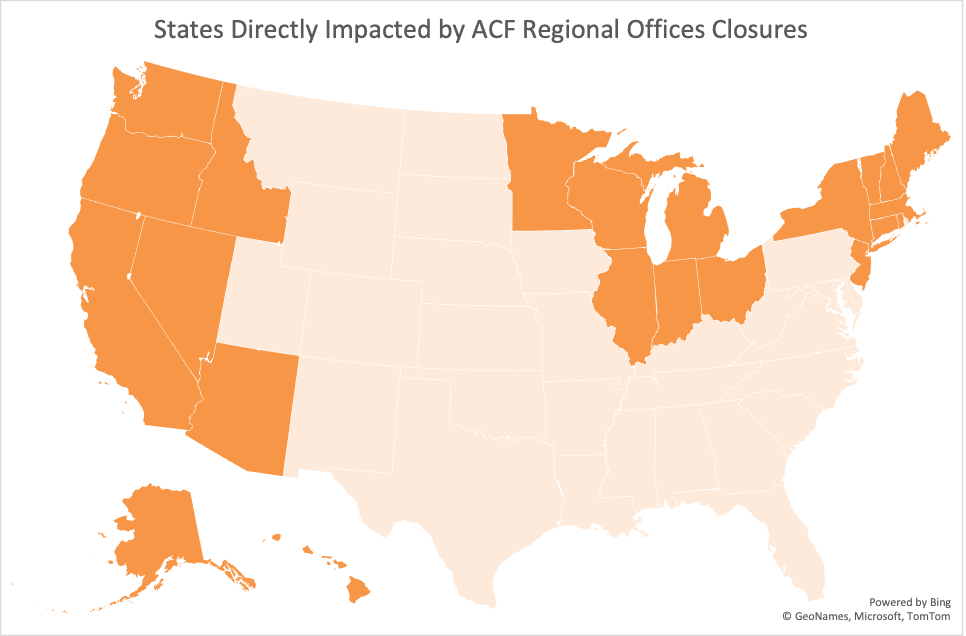
Potential Near-Term Impact of Closures: Reorganization of the functions to generate efficiencies that cover the same level of output would take time.
In the meantime, experts expect the following impacts:
Delays. Contracts for services, technical assistance for jurisdictions and grantees, and disbursement of funds will likely be slower.
Raising Risk for Jurisdictions: Regional offices play a role in working with states to clarify what’s permissible. Without support, jurisdictions assume more risk.
Fewer Insights for Oversight. Regional relationships are the eyes watching for possible improper uses of funds.
Less Innovation. Novel ideas emerge from creative reforms to programs that are permissible but untested. Expect less of this with fewer folks to gut check ideas.
So that’s an operational impact perspective. What about programs?
Cuts In Context: SSBG Impact of RIFs
Wonks know from our original Social Services Block Grant (SSBG) overview that the flexible program is $1.7B annually and 10 percent of federal child welfare spending.
Impact of Eliminating SSBG Staff: The recent RIFs eliminated all staff working on SSBG. This is happening at the same time as SSBG faces elimination in reconciliation.
Child Welfare Wonk’s recent analyses have also highlighted the outsize role the program pays in many state child welfare agency budgets, as shown here:
ACF routinely posts tables of its funding distributions for SSBG. You can see the most recent full FY here. This map shows the distribution by states:
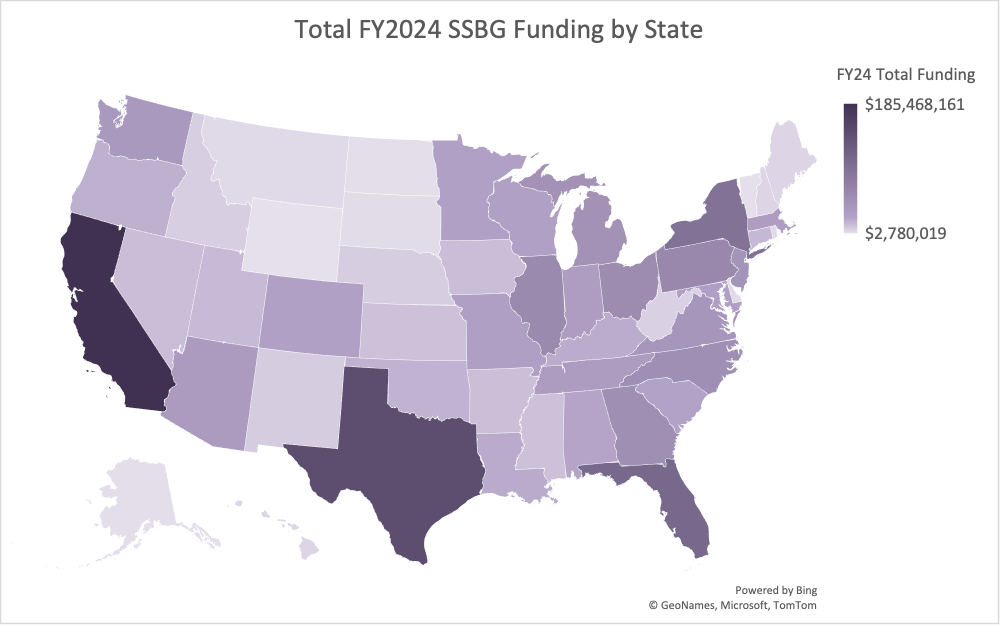
What it Does: SSBG’s impact is bigger than its $1.7B because it’s permissible to transfer up to 10% of Temporary Assistance for Needy Families (TANF) $ into SSBG.4
Those funds must then serve children and their families with incomes at or below 200% of the federal income poverty guidelines.5
When combined, the program makes significant investments into child welfare services. You can see here total spending by category.
Who it Serves: The most recent data indicate 3.1 million individual recipients of services through the category Child Welfare/Youth at Risk, including 2.5 million kids.
The Latest on SSBG Management: So far for FY2025, ACF has reported the release of ~$725M in SSBG funds, just under half of the program’s annual funding.
Where’s the Rest: A release was due in March; Congress had previously funded the government through March 14th, leaving the rest of Q1 and all of Q2 to release.
There is no report on the ACF website of the release of remaining Q2/Q3 funds, and Child Welfare Wonk is not aware of any jurisdictions yet reporting receipt of funds.
How Long That Takes: As a program with a relatively stable disbursement formula and funding level for decades, SSBG disbursement is usually quite straightforward.
Recipient jurisdictions and experts with knowledge of the program report that disbursement is usually within weeks of Congress’ green light.
When to Expect Tranche 3 of SSBG: It’s unclear when more SSBG funds will flow. Based on past experience, that would normally have occurred by now.
In the absence of funding, it’s also unclear how long jurisdictions can weather any delay before facing their own staffing and programmatic impacts.
SSBG Long-Term: We don’t know what the elimination of all staff in the office overseeing SSBG will mean for the timing for release of funds going forward.
This is just one of many ACF programs, as an illustrative example. Which raises larger cross-cutting questions for policymakers.
Questions for Consideration
All of this raises questions, whether you are a Hill staffer prepping oversight hearings, a state/county official planning amidst state budget season, or a local service provider.
As we continue to monitor the impact of these changes to ACF, emerging questions of interest will include:
How is ACF reorganizing? The scale suggests a comprehensive reorganization of ACF. What shape will take and what does it mean for ACF programs.
How will these changes impact funding disbursements? Jurisdictions and grantees rely on timely receipt of expected funds. How will that change?
Will states faces delays for plan approvals? States routinely update plans for programs, which requires regional office support and oversight.
How is risk changing for public finances? Technical support helps states know they are following the law. Program integrity requires insight into implementation.
How to innovate amidst uncertainty? The biggest ideas in federal reform have always emerged from creative changes within existing law by enterprising states.
What impact will this have for Cost Allocation Plans (CAPs)? CAPs are a wonky and vital budget tool for determining federal reimbursement across many programs that require cross-cutting understanding of those programs.
What do these changes mean for implementation of bipartisan reforms? Recent bipartisan child welfare policy reforms require ongoing implementation support. We don’t yet know what this all means for those programs.
How Do Other HHS Changes Affect ACF? For example, there are reports of a RIF of the team that calculates federal poverty level for HHS program eligibility.
What Comes Next: Extensive coverage of programmatic impacts on health programs has highlighted RIFs likely facing reversal.
It is not yet clear what if any ACF positions may fall within the 20 percent HHS Secretary Kennedy has indicated will likely be reinstated. We will keep you apprised.
That’s it for today. Have a good week, Wonks!
To dig in on the state politics here, this article covers the states who have Medicaid baked into their state constitutions; South Dakota, Missouri, and Oklahoma.
Astute Wonks will also note that this dynamic impacts the home states of Senate Majority Leader John Thune (R-SD) and House Ways and Means Committee Chairman Jason Smith (R-MO). This will be worth watching…
The rules governing RIFs are outlined at Title 5, Code of Federal Regulations, Part 351.
The original ‘96 welfare reform law (P.L. 104-93) set this limit. In the Transportation Equity for the 21st Century (P.L. 105-78), Congress reduced SSBG to its current total of $1.7B, and lowered the transfer authority to 4.25% starting in FY01. Congress has waived this each year in appropriations legislation and retained the original 10%.




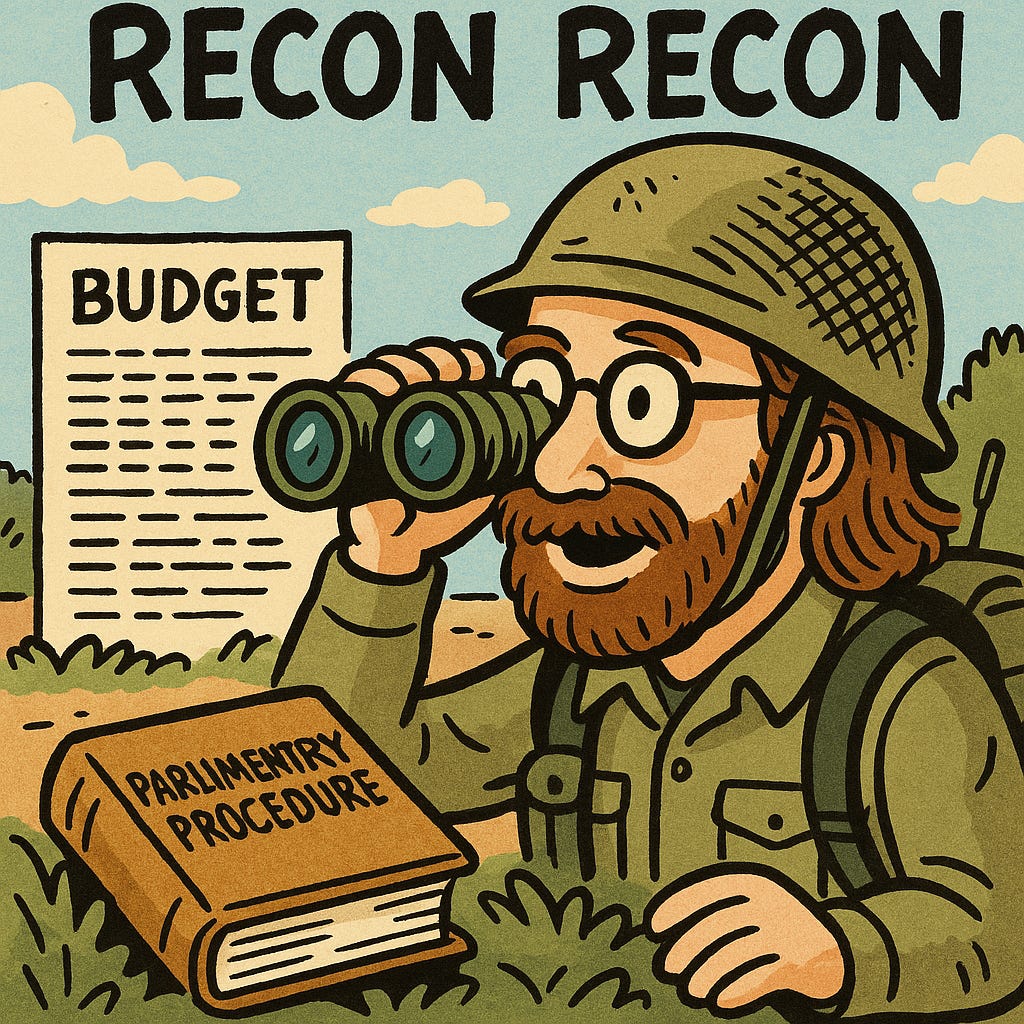
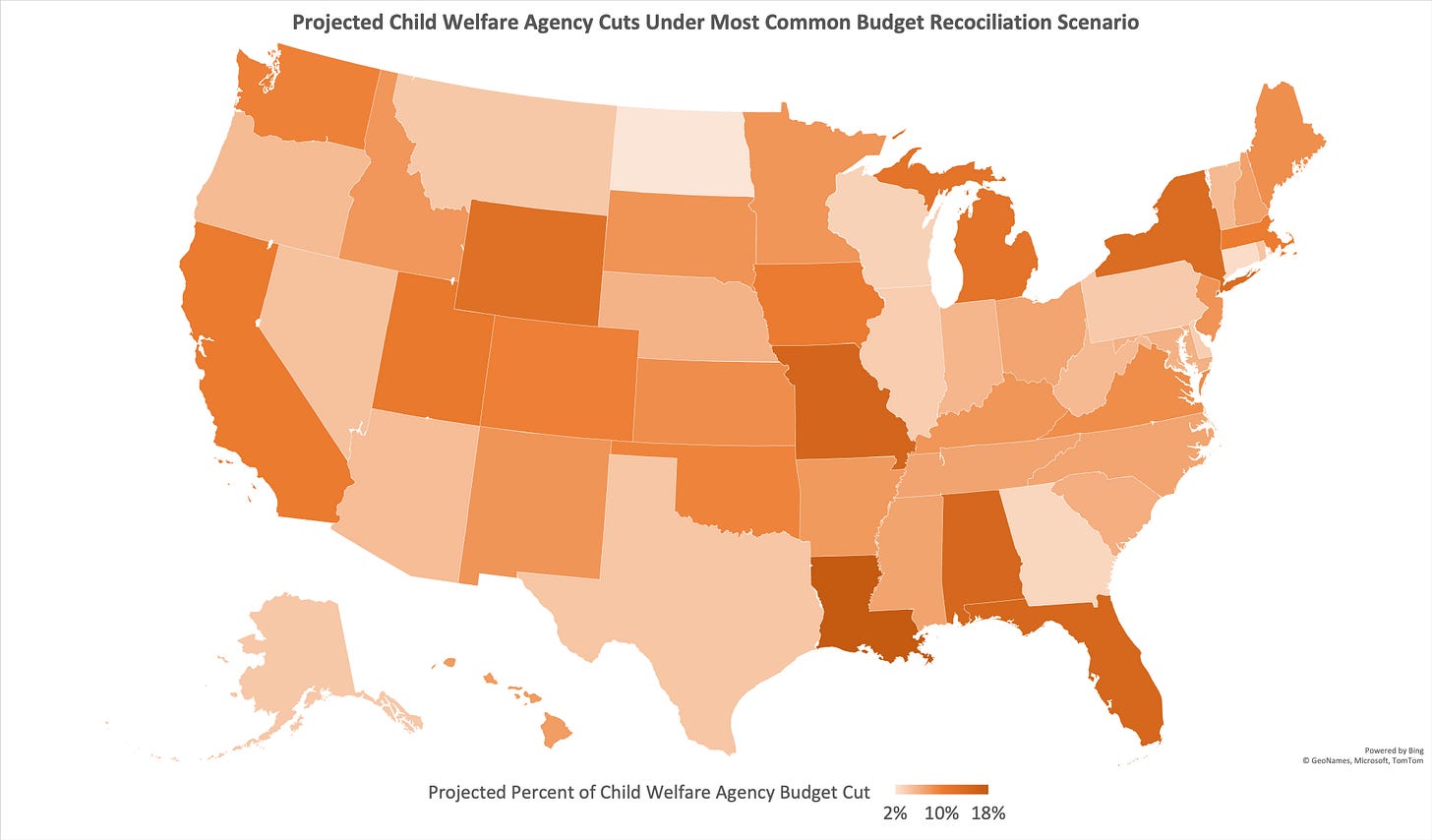
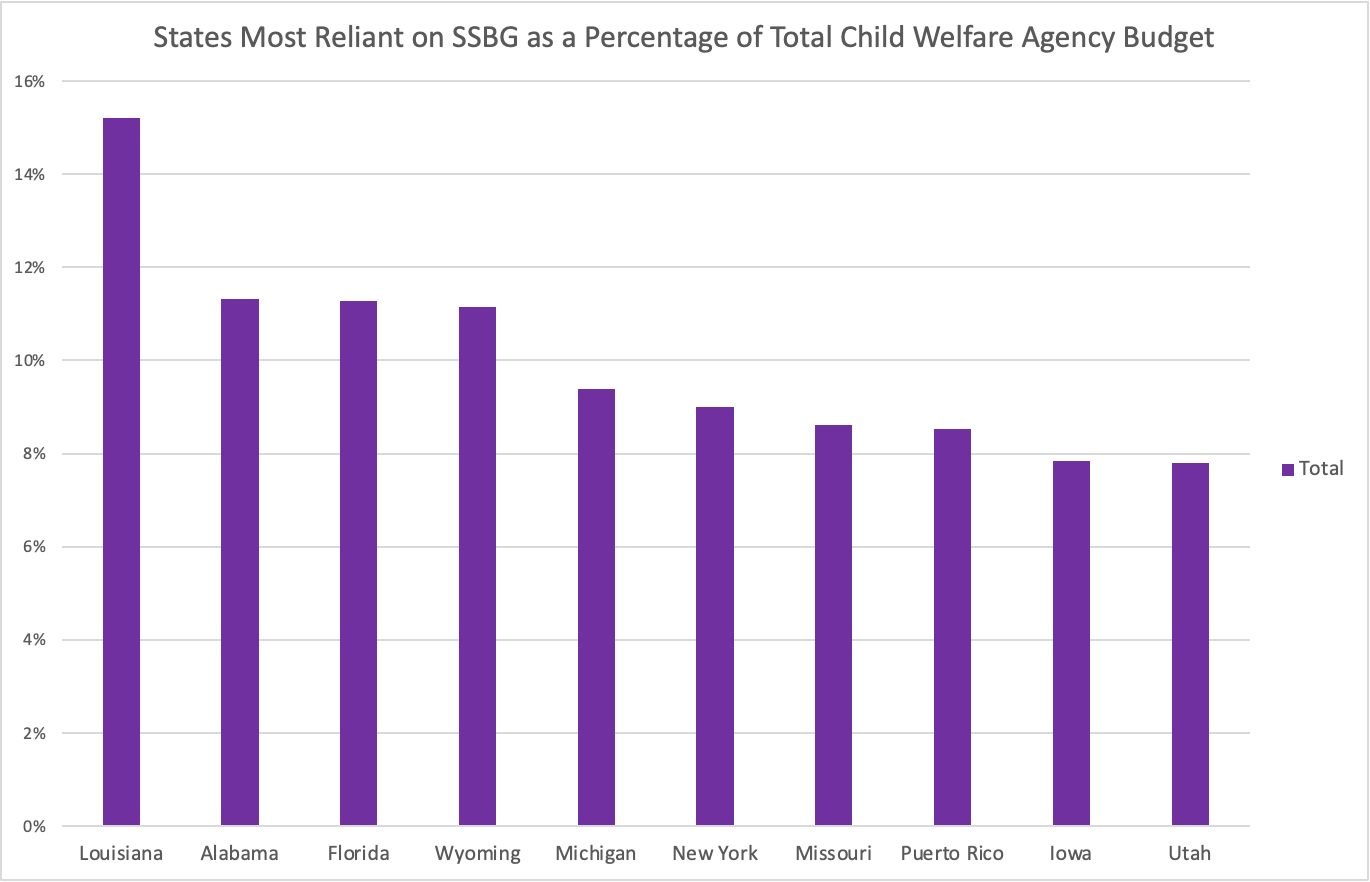
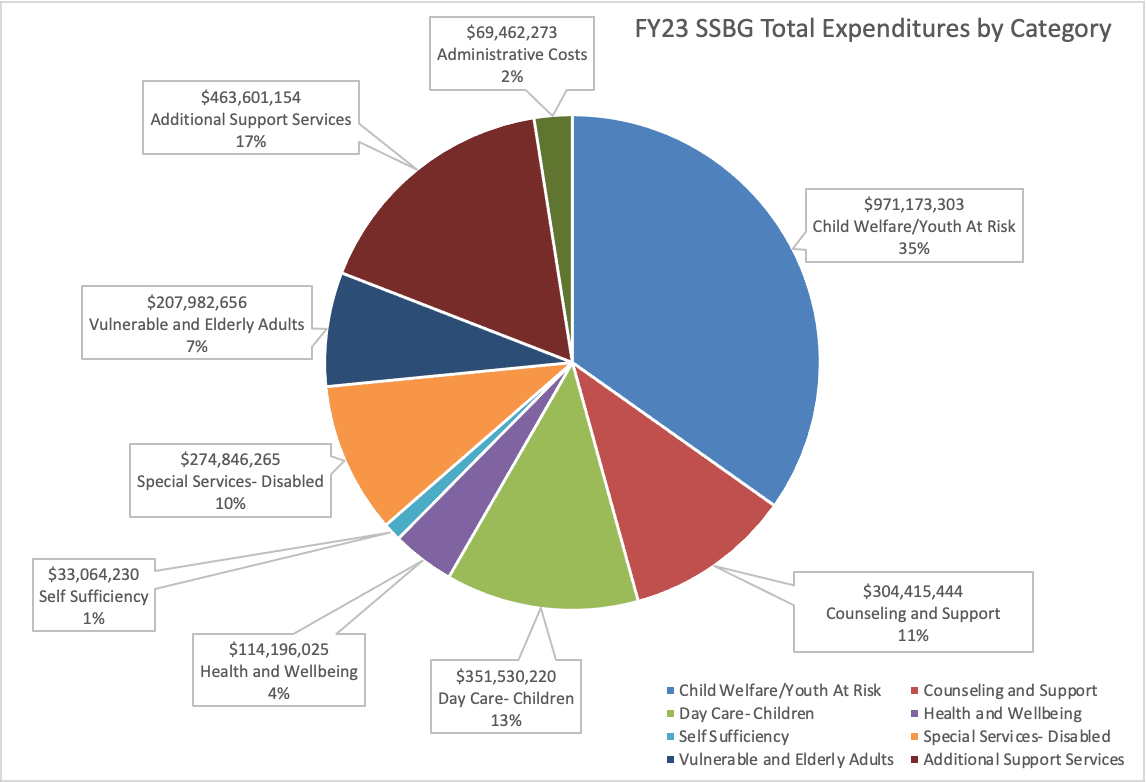
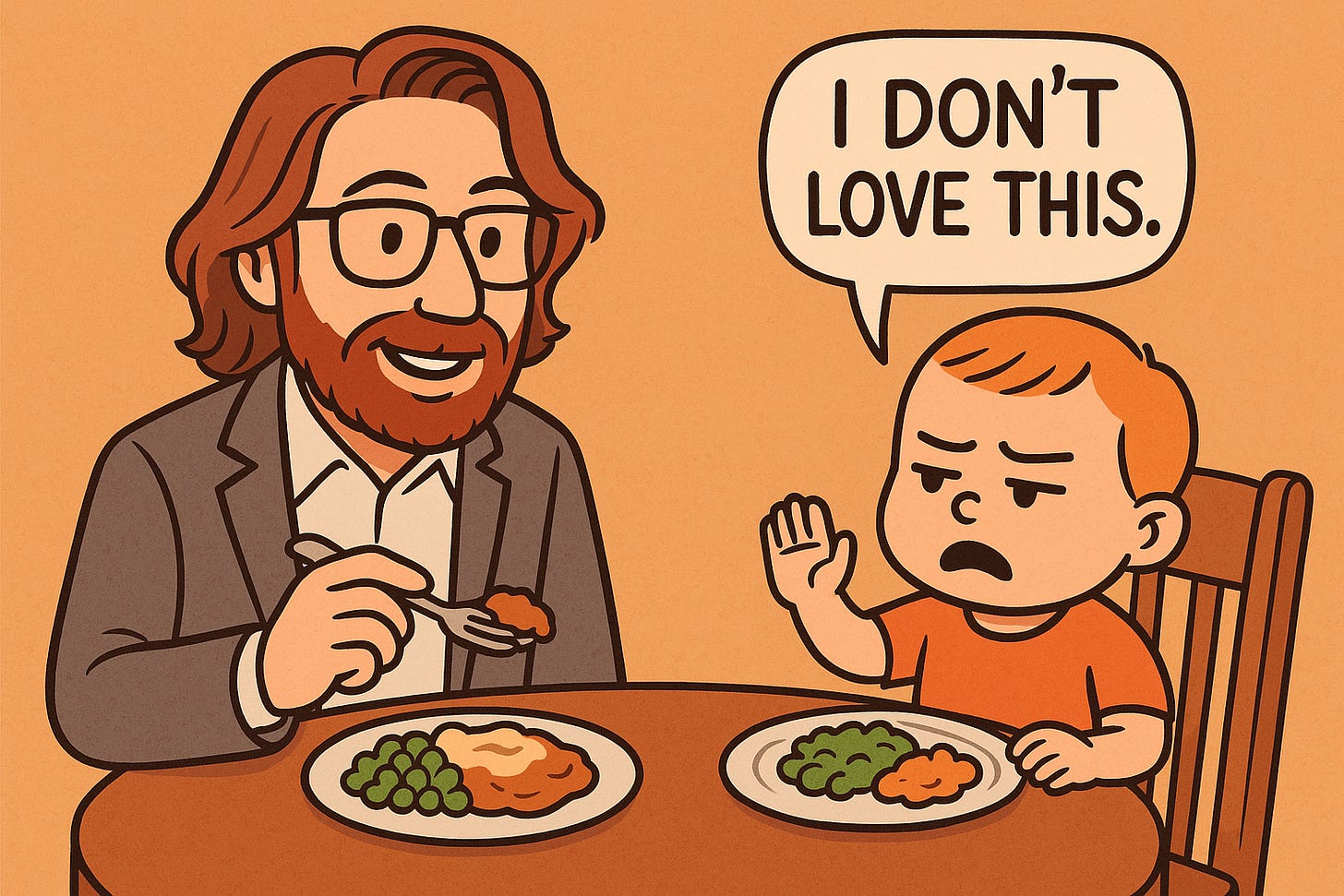
This information is so helpful, thank you!
Thank you for shedding light on SSBG’s impact!